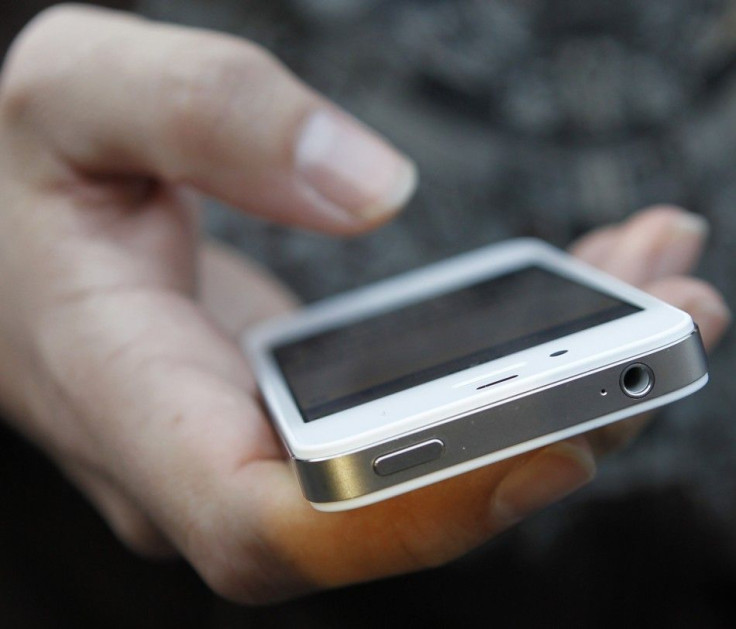Apple iPhone 5 Release Date Rumored for October 2012

Apple may release its next-generation iPhone -- presumably called the iPhone 5 -- in September or October 2012, according to Japanese blog Macotakara. Citing an Asian reliable source, Macotakara believes Apple is moving away from mid-year launches and leaning toward a 12-month iPhone upgrade cycle starting in the fall.
The last iPhone, the iPhone 4S, was the first Apple smartphone released outside of the summer months. The original iPhone, as well as the iPhone 3G, 3GS and 4 models, were all released in June or July. While there is no clear reason why the 4S was the only iPhone released in the fall, analysts believe Apple attempted to implement LTE into the phone, and failed. Now, Apple hopes to maintain a regular schedule by keeping each new iPhone release about 11 months apart.
There is a very high chance that LTE, which stands for Long-Term Evolution, will be featured in Apple's next iPhone.
LTE features significantly higher download and upload speeds compared to 3G technologies, but the current implementations of LTE in phones appear to cause very short battery life, which is a major complaint by users. If Apple wanted LTE in the iPhone 4S, it would have been forced to increase the phone's thickness to accommodate a larger circuit board and a bigger battery. Apple CEO Tim Cook, in a company earnings conference call in April 2011, said first-generation LTE chipsets force a lot of design compromises.
The iPhone 4 PCB [printed circuit board] is already incredibly small, not leaving any room for an extra chip to enable LTE without shrinking the size of the battery, said Anand Shimpi, a chip expert and CEO of Anandtech.
Luckily for Cook and Apple, Qualcomm has reportedly developed a new, thinner LTE chipset, which is considerably smaller than current LTE chipsets. The new LTE chip is expected to debut in the iPad 3, with the Wall Street Journal confirming that AT&T and Verizon Wireless are both planning to sell iPads with LTE capabilities. If the iPad is getting LTE in March, there is little doubt left that the next iPhone will get the same high-speed treatment.
As of January, Apple was reportedly gearing up to begin production on the iPhone 5. A source from within China's Foxconn manufacturing plant told 9 to 5 Mac various sample iPhone 5 prototypes are floating around the floor, but there are a number of common features among the phones, including a display that measures at least 4 inches, and a longer and wider form factor that does not match that of the iPhone 4 or 4S. The iPhone 5 will also reportedly retain the rectangular shape of its predecessors, putting to bed rumors of a thinner teardrop shape.
Previous reports have said the Apple iPhone 5 will feature an improved version of Siri, the voice-activated AI system that was only released as a beta in the iPhone 4S, as well as a bigger screen. In November, Hitachi and Sony reportedly began shipping 4-inch LCD panels for final production of new iOS devices believed to be the next-generation iPhone. Upgrading the iPhone's 3.5-inch screen to a 4-inch display would require a rebuilt Retina Display, but a bigger screen would help Apple compete against phone makers that make bigger screens, such as Samsung, while also providing a more immersive iPhone experience.
Before Apple unveiled the iPhone 4S on Oct. 4, the Internet was flooded with photos of a thin, large-screen iPhone 4. The photos were widely believed to be doctored until one Chinese site discovered mold engineerings of an iPhone 4 with a noticeably larger screen. The renderings depicted an edge-to-edge design for the iPhone's screen, which looked to measure about 3.7 inches. Component industry trackers believed that the images represented Apple's wish to compete with rival devices with bigger screens.
Apple wants its next generation of mobile devices to look beautiful, and the company is reportedly working on giving its devices greater pixel density. Bigger screens with more pixels in the Retina Display mean higher resolution for watching movies and viewing detailed images, from PDFs to X-rays to MRIs to 3D architectural renderings. Even text will appear rich and razor-sharp. While the iPad 3 will double the pixel density of the iPad 2, it's likely that Apple would reconfigure the Retina Display not only feature more pixels, but also to match a slightly bigger screen. Apple fans and users would benefit from a bigger and more beautiful Retina Display, but this switch could force app developers to learn an entirely new way to write their iOS software.
Apple's next iPhone may also include a number of the company's recently granted patents, including NFC functionality to complete sales transactions and share work across multiple devices, as well as its crack-resistant glass solution. A shock mount between the glass and the body of the device will instantly inflate if the device senses it's falling, which is determined by the device's internal accelerometer. An actuator within the device sucks in the cover glass as it accelerates to the ground, protecting it from damage.
If Apple intends to release the iPhone 5 in the fall, it may unveil its next-gen smartphone alongside a smaller, 8-inch iPad, which is also expected to debut in October. The original report from Apple's Taiwanese supply chain was later confirmed by The Wall Street Journal, which said Apple is working on an 8-inch iPad.
On Jan. 24, Cook released Apple's record-breaking Q1 2012 earnings, announcing $46.33 billion in overall earnings, $13.1 billion in profit and $17.5 billion in cash for the quarter that ended Dec. 31, 2011. In the last 14 weeks of the year, Apple sold 37 million iPhones, 15.4 million iPads and 5.2 million Macs.
We're thrilled with our outstanding results and record-breaking sales of iPhones, iPads and Macs, Cook said. Apple's momentum is incredibly strong, and we have some amazing new products in the pipeline.
© Copyright IBTimes 2024. All rights reserved.






















